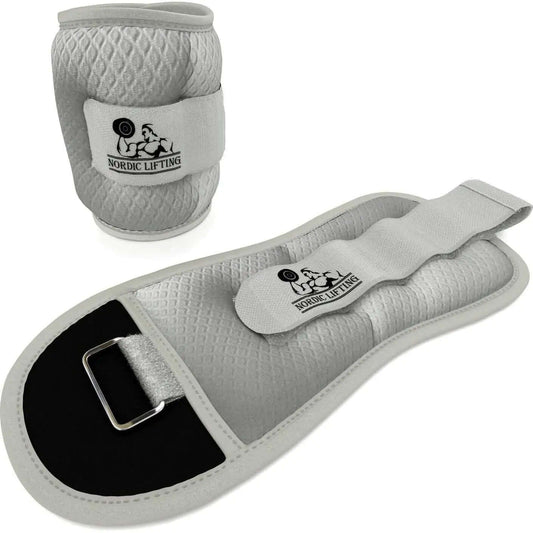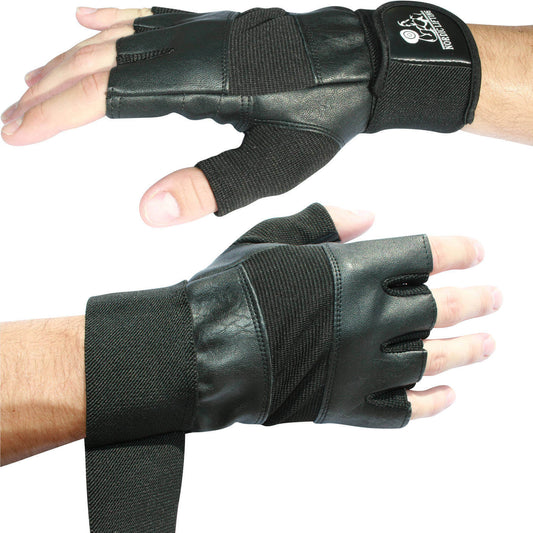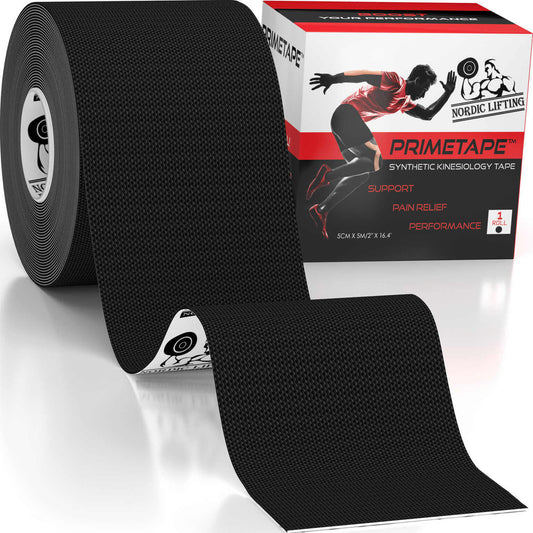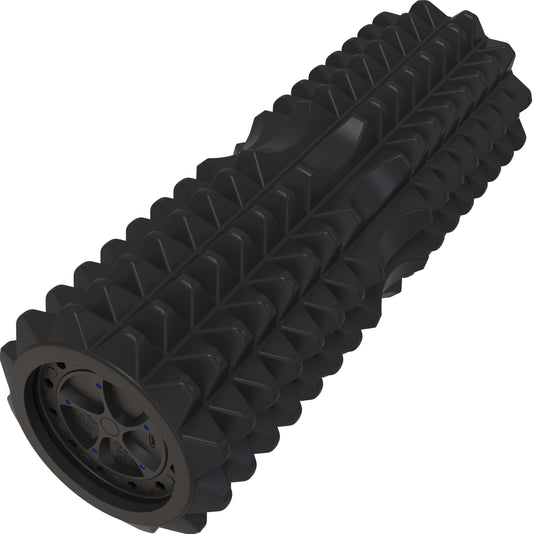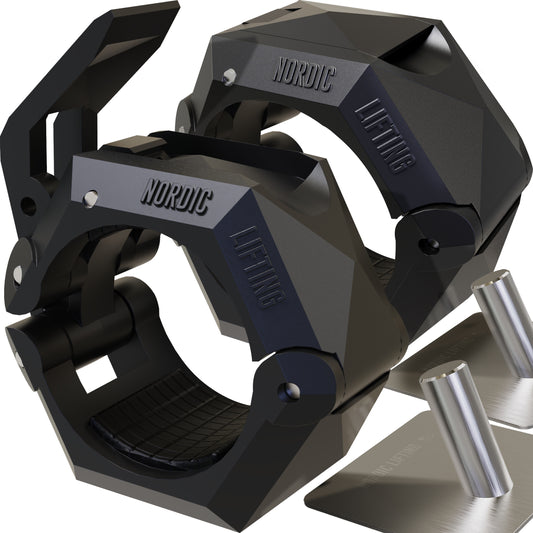Last Updated: April 21, 2025
Having a strong, toned back helps people move better and feel more confident. The best exercises for a toned back target different back muscles and improve posture, strength, and overall fitness. Simple moves like bent-over rows, planks, and Superman holds can make a real difference when added to a regular routine.
Both bodyweight and free weight exercises play an important role in back toning. Good form is key to avoiding injuries and getting better results. With the right exercises, anyone can work toward a healthier and more fit back.
Key Takeaways
- Different back exercises help tone muscles and improve strength.
- Using proper form is important for safety and progress.
- Regular back workouts support long-term fitness and health.
Understanding Back Anatomy for Toning
A toned back relies on building several muscle groups and supporting them with strong core and upper body muscles. Creating muscular balance is important for posture, injury prevention, and achieving well-defined back muscles.
Major Back Muscle Groups
The back includes several important muscle groups. The erector spinae runs along the spine and helps with posture and lifting. The latissimus dorsi or “lats” are large muscles on each side of the back, important for pulling movements.
Other key muscles are the trapezius in the upper back, which supports the neck and shoulders, and the rhomboids, which bring the shoulder blades together. The quadratus lumborum is found in the lower back; it assists with side bending and stabilizes the spine. Each group plays a unique role that works together for strength and tone. To learn more about these back muscle groups and how they function, check out this helpful guide.
Role of Core and Upper Body Muscles
A strong back relies on more than back muscles alone. The core—including the abs and obliques—is key for core stability. This provides support to the spine and helps in almost every movement.
Upper body muscles like the deltoids in the shoulders and the triceps in the arms assist in back exercises too. The glutes and hamstrings are also involved, especially during compound lifts like deadlifts and rows. Proper coordination between these muscle groups allows for better results and reduces the risk of injury. Focusing on both core and upper body muscles, along with the back, helps build a balanced and toned appearance.
Importance of Muscular Balance
Muscular balance means all muscles work in harmony, with no area too weak or too strong. When some muscles are stronger than others, a person may develop poor posture, aches, or even a higher risk of injury.
Balanced training includes exercises for the upper back, lower back, and supporting muscles. This improves posture, helps prevent muscle imbalances, and supports daily activities like lifting and carrying. Following a balanced routine, as listed in these expert recommendations for toning your back, can assist in achieving both strength and a toned look. Stretching and strengthening all muscle groups helps prevent tightness and increases flexibility.
Benefits of a Toned Back
A toned back supports a person’s physical activities by building core strength and balance. Strong back muscles help people stay healthy, reduce common aches, and move with more confidence.
Improved Strength and Stability
A toned back makes it easier to lift, push, and pull objects by giving the upper body more power. Back muscles like the latissimus dorsi, trapezius, and rhomboids are important for many actions, including carrying groceries or picking up children.
Back exercises boost the body's center of gravity and balance. This extra stability makes it easier to perform sports, fitness routines, and everyday tasks without feeling unsteady.
Stronger back muscles also add support to the spine. This stability helps keep a person steady when walking, climbing stairs, and even standing or sitting for long periods. For more details on building a strong back, see Harvard Health’s article on effective exercises for building a strong back.
Injury Prevention
Strengthening the back lowers the risk of common injuries, especially those from lifting or sudden twisting. When the back muscles are weak, the risk for strains, sprains, or even more serious issues like herniated discs is higher.
A strong back works as a shield, insulating the body against some injuries that happen during sports or daily movement. Back exercises are important for people who want to protect their long-term health and keep working or being active without pain.
Doctors and trainers agree that injury prevention is one of the main benefits of regular back exercise. Even simple routines can help a person avoid hurting themselves at home or work.
Posture and Daily Function
Good posture depends on strong back muscles. When these muscles are toned, they hold the shoulders and spine in the right position. This prevents slouching and helps reduce tightness or pain in the neck and shoulders.
Better posture also means less pressure on the lower back and hips. People who spend a lot of time sitting or driving benefit the most, since a toned back helps distribute weight evenly over the body.
A toned back improves many everyday actions. Sitting for long periods, walking, or lifting are easier, as is standing up straight. For women, targeted back exercises like rows or lat pulldowns are especially useful for alleviating back pain and improving daily posture.
Essential Exercises for a Toned Back
A strong back helps with posture, balance, and daily movement. By adding different types of back exercises into a workout routine, anyone can build muscle, prevent injury, and achieve a more toned appearance.
Bodyweight Back Exercises
Bodyweight back exercises are simple, do not need equipment, and can be done at home. Moves like the Superman target the lower and mid back by having the person lie face down and lift their arms and legs off the floor. This improves back strength and muscle tone.
Planks are also helpful because they focus on the core but engage the back. A side plank further works the side back muscles, called the obliques, and helps make the upper body stronger.
Another good option is the reverse snow angel. By lying face down and moving the arms from the sides to overhead, people can work the upper back and shoulders. All these bodyweight back exercises are great for people new to strength training or those looking for low-impact moves. Learn more about these routines at Piedmont Healthcare.
Compound Movements
Compound exercises use multiple muscle groups at once and are important for a back workout. The bent-over row is a key move that builds the upper and middle back, and only requires dumbbells or a barbell. Proper form is important: keep the back flat and pull the weights to the waist.
Deadlifts are another compound exercise that work the lower back, legs, and glutes. They are excellent for both building strength and gaining muscle definition. Pull-ups are also effective as they challenge the back, arms, and shoulders at the same time.
Compound exercises are often included in upper body routines because they save time and give the most benefit for effort. To see examples of these movements, check out Gymshark's guide to the best back exercises.
Isolation Back Workouts
Isolation back workouts target one main muscle group at a time. The dumbbell fly helps develop the rear shoulders and upper back by focusing on a controlled arm motion. The dumbbell Y-raise is also valuable—it works the upper traps, rear delts, and parts of the upper back.
For more focus on the middle back, the plank dumbbell row is useful because it combines core stability with muscle isolation. Using light weights with slow, controlled reps helps tone your back without bulking up.
Isolation moves are best done after compound exercises to fine-tune muscle tone. For a detailed list of these exercises, visit Piedmont Healthcare's exercise guide.
Top Bodyweight Exercises
Bodyweight moves are a great way to train the back and boost core strength. Exercises like planks, bridges, and twists build muscle, support better posture, and improve daily function. These movements also help with balance, stability, and endurance.
Planks and Side Planks
Planks are a top choice for working the core and back together. By holding the body in a straight line, the muscles along the spine, shoulders, and abs all stay engaged. Planks target the erector spinae, which helps support good posture and a healthy lower back.
Side planks are a variation that challenges balance and control. They mainly train the obliques along the side of the core, but they also involve the lats and lower back muscles. This move is especially helpful for building core stability and fighting muscle imbalances.
Both exercises test endurance, since they require holding the position for time, not just reps. Short sets are good for beginners, while longer holds can increase difficulty as strength improves. If needed, knees can be placed on the ground to make the moves easier, and harder versions like leg lifts can be added as strength grows. To learn more about bodyweight back exercises like planks, see this detailed list of options for all levels.
Glute Bridge
The glute bridge mainly trains the glutes and hamstrings, but it is also effective for the lower back. By lifting the hips and squeezing the glutes, the muscles of the lower back are activated to keep the hips steady. This move can help reduce the risk of back pain by keeping the back and core strong.
Proper form is key. The feet should stay flat on the ground, and the body should form a straight line from knees to shoulders at the top. Holding for a few seconds at the peak of the movement increases muscle tension and endurance.
Variations like single-leg bridges make the move more challenging and recruit even more core muscles to prevent the hips from rolling. Consistency with glute bridges can help ease tight muscles and improve overall core stability. For more simple exercises like the glute bridge, check out this effective bodyweight back routine.
Russian Twists
Russian twists focus on rotational movement, training the obliques and deeper core muscles that support twisting and turning. Sitting on the floor with knees bent, a person leans back slightly to engage the core. The hands move side to side, touching the ground near each hip.
This exercise not only builds rotational strength but also improves endurance as the motion is repeated for multiple reps. Keeping the feet off the ground can make the move harder and force the lower back and abs to work even more.
The Russian twist is useful for everyday activities that involve turning and reaching. It is also great for athletes who need to move quickly in different directions. Like other core moves, it helps protect the spine and supports a toned back. Guidance for twisting techniques can be found in various bodyweight back exercise articles.
Effective Free Weight Back Exercises
Using free weights helps target both large and small muscles, allowing for more natural movement and greater muscle engagement. Free weight back exercises improve strength, support posture, and can be adapted for different fitness levels.
Barbell Movements
Barbell exercises are classic for building back strength. The barbell deadlift is a compound exercise that targets the lower back, glutes, and hamstrings. To perform a deadlift, keep the barbell close to the body, hinge from the hips, and stand tall as you lift.
The barbell bent-over row works the upper back and rear shoulders while also challenging grip strength. For rows, bend at the waist and pull the barbell toward the lower chest.
Other useful barbell exercises include the barbell shrug for the traps and the barbell good morning for the lower back. These moves can be done with different grip widths and tempos to focus on specific areas.
| Barbell Exercise | Area Targeted |
|---|---|
| Deadlift | Lower Back |
| Bent-Over Row | Upper Back |
| Good Morning | Lower Back |
| Barbell Shrug | Traps (Upper Back) |
Dumbbell Routines
Dumbbells allow for a bigger range of motion and can help correct strength imbalances. The dumbbell bent-over row targets the upper and mid-back. Holding a dumbbell in each hand, hinge at the hips, and pull the weights toward your ribs.
The single-arm row lets each side work alone, which can help develop balanced strength. Place one knee and hand on a bench, grasp a dumbbell with the other hand, and pull toward your hip.
Moves like the dumbbell pullover stretch the upper back and target the lats. The renegade row challenges both the upper back and core, as you row the dumbbells from a plank position. Learn more about dumbbell back exercises and how they build strength across the back.
- Dumbbell Bent-Over Row: upper & mid-back
- Single Arm Row: lats, rear shoulder
- Pullover: upper back, chest
- Renegade Row: back, core
Incorporating Machines and Cables
Machines and cables make it easier to control movement, keep good form, and target the right muscles in the back. These tools can be used for both beginners and experienced people to improve their strength training routines.
Lat Pulldown Variations
Lat pulldown exercises use a cable machine to focus on the latissimus dorsi, or "lats," making the upper back wider and stronger.
Basic lat pulldowns use a straight bar, but there are many options. A wide-grip pulldown works the outer part of the lats, while a reverse-grip (underhand) pulldown can help with lower lats and also involve the biceps. Using a neutral-grip (palms facing each other) can reduce strain on shoulders and wrists.
To perform a lat pulldown, sit at the machine, grab the bar, and pull it toward your chest while keeping your back straight. Focus on keeping your elbows close to your sides. Proper form is key to avoid injury and to make sure the lats are doing most of the work. For more tips and details, check out this guide on cable machine exercises.
Cable Row Techniques
Cable rows strengthen the middle and lower back, rhomboids, and rear shoulders. The most common type is the seated cable row.
Begin by sitting upright and grabbing the handle with both hands. Pull the handle toward your lower chest or stomach, squeezing your shoulder blades together. Keep your back flat and avoid using momentum. Adjusting grips and attachments, like a V-bar or wide bar, changes which muscles do the most work.
Single-arm cable rows can help correct muscle imbalances and improve focus on each side of the back. Cable machines allow steady tension through the whole movement, which is important for muscle growth and improving posture. For more exercise ideas and back workout suggestions, see this collection of cable machine back exercises.
Lower Back Strengthening Movements
Building strength in the lower back helps reduce injury risk and supports good posture during everyday activities. Movements that use the glutes, erector spinae, and hamstrings also make the back stronger and more stable during exercise.
Squats for Lower Back and Glutes
Squats are a compound movement that work the lower back, glutes, and legs at the same time. In a basic squat, a person stands with feet about shoulder-width apart, bends their knees, and lowers their hips back as if sitting down in a chair. It is important to keep the chest up and the back straight to help engage the lower back muscles.
The glutes and hamstrings do much of the work when standing up from the squat position. This full lower-body movement helps train the erector spinae, the muscles that run along each side of the spine. Squats also help improve balance and core strength, which supports lower back health.
People can use a barbell, dumbbells, or just their own body weight. Beginners may want to start with bodyweight squats before adding weight. As strength builds, adding more resistance will increase the challenge for the glutes, lower back, and hamstrings. For more on effective back exercises, check out these lower back strengthening examples.
Benefits of squats for the lower back:
- Trains multiple muscle groups at once
- Builds strength in the glutes and hamstrings
- Supports core stability
Hyperextensions
Hyperextensions, also known as back extensions, directly target the lower back and erector spinae. To perform this movement, a person lies face down on a hyperextension bench or mat, locks their feet in place, and bends at the waist to lower the upper body toward the ground. Then, they slowly lift their chest up so the body forms a straight line.
This exercise is key for improving lower back strength because it isolates and works the muscles along the spine. By lifting the upper body, the erector spinae contract and become stronger over time. Glutes and hamstrings also get involved to stabilize the hips during the movement.
It is important to move in a slow, controlled way to protect the spine. Beginners should start with fewer repetitions and focus on using good form before adding weight or resistance. More details on targeted back exercises can be found in this exercise guide for lower back stability.
Tips for safe hyperextensions:
- Keep movements smooth and controlled
- Avoid overextending the spine
- Focus on feeling the muscles work rather than using momentum
Proper Form and Technique
Using correct form during back exercises helps build muscle evenly and can prevent injury. Paying attention to specific technique steps is important for getting results safely and effectively.
Common Mistakes to Avoid
Many people rush through exercises, sacrificing form for speed. This can lead to muscle imbalances and even injury. When doing moves like bent-over rows or pull-downs, common errors include using momentum, swinging weights, or rounding the back.
Incorrect form signs:
- Shoulders scrunch up toward the ears
- Back arches or rounds too much
- Elbows flare out instead of staying close to the body
- Jerking the weight or letting it drop
To avoid these, keep movements slow and controlled. Make sure to engage the core, and always check that your spine is neutral. Breathing is also important—exhale while lifting and inhale while returning to start position. Focusing on technique, not just weight, can help reduce strain on the lower back and promote injury prevention. More advice can be found in exercise guides for a toned back.
Tips for Optimal Results
To maximize results and stay safe, start each workout with a quick warm-up to get blood flowing to the back muscles. Use a mirror or record yourself to check form. Select weights that are challenging but allow for full range of motion with good technique.
Helpful tips:
- Pause briefly at the top of each movement
- Squeeze shoulder blades together during rows
- Keep wrists in line with forearms
- Maintain slight knee bend for standing exercises
Varying grip positions, such as overhand or underhand, can target different parts of the back. Rest enough between sets, and never increase weight at the expense of form. Listening to the body and stopping if pain (not normal muscle fatigue) occurs is key for injury prevention. For more back workout ideas, see this collection of back exercises.
Designing an Effective Back Workout Routine
A good back workout routine helps target all major muscle groups in the back and supports good posture. Making a plan that covers different types of movements can help build a stronger and more toned back.
Structuring Your Weekly Program
A well-structured exercise routine spreads workouts throughout the week to allow time for recovery. Most people benefit from training their back 2 to 3 times per week. This lets the muscles recover and grow stronger between sessions.
Each workout should include a mix of pulling movements and rows. Examples of effective back exercises are lat pulldowns, bent-over rows, and landmine rows. Adding a variety of movements helps work different parts of the back and avoids plateaus.
Sample Back Workout Schedule:
- Day 1: Pull-ups, seated cable row, face pulls
- Day 4: Lat pulldowns, bent-over barbell rows, dumbbell reverse fly
Aim for 2-4 sets of 8-12 reps for each exercise. Beginners may use lighter weights, while those with experience can choose heavier loads for more challenge. Adjust rest and intensity based on fitness level. For more exercise ideas, see this complete back workout.
Balancing Strength and Endurance
A solid back routine should focus both on building strength and on improving endurance. Strength exercises such as barbell rows and deadlifts use heavier weights and fewer reps, usually from 5 to 8 per set. This builds muscle and power.
Endurance exercises use lighter weights and more reps, around 12 to 15 per set. Examples include resistance band rows and bodyweight supermans. This type of training helps improve stability and keeps the back muscles from tiring quickly during daily tasks.
By mixing both types into the workout, the muscles develop in multiple ways. Switch between strength days and endurance days to keep the routine balanced. Regularly changing exercises and intensity can help avoid plateaus and reduce injury risk. Find more tips on effective back exercises.
Special Considerations and Back Health Tips
People can protect their back health and get better results by choosing the right exercises and adapting their routines to meet their needs. A balanced approach helps build strength, burn fat, and manage problem areas like love handles.
Adapting Exercises for Different Fitness Levels
For beginners, bodyweight exercises such as supermans and planks offer a safe starting point. These moves focus on basic strength without placing too much pressure on the back. If needed, try exercises on a mat to add extra support.
Intermediate and advanced levels may use free weights or resistance bands. Bent-over rows with dumbbells or barbell variations can help tone the entire back. It's important to start with light weights and slowly increase resistance as strength improves.
All fitness levels should focus on form and avoid jerky movements. Keeping the core engaged protects the lower back during lifting. For those with health concerns or past injuries, it's wise to talk to a health professional before trying new exercises. Rest days are also key to allow muscles to recover and prevent strain.
Key Tips for Adapting Back Workouts:
- Start slow and build up intensity
- Focus on smooth, controlled movements
- Use correct form every time
- Listen to the body for any pain or discomfort
Addressing Love Handles
Love handles are the areas of fat around the sides of the waist. These can be stubborn, but regular exercise and healthy habits help reduce them. Cardio activities like brisk walking or cycling, along with targeted strength routines, play a big part.
Plank variations, Russian twists, and side plank dumbbell raises are examples of moves that target the muscles near the love handles while also supporting overall back health. For guidance, check out a list of back exercises that tone the back and sides.
A balanced diet is just as important as exercise when trying to lose fat in this area. Reducing sugars and processed foods, while eating more lean protein, fruit, and vegetables, can improve results.
List of helpful tips for reducing love handles:
- Add core exercises 2–3 times each week
- Include some daily cardio
- Stay hydrated and eat clean foods
- Get enough sleep each night
Frequently Asked Questions
Back toning exercises can be done both at home and at the gym. Bodyweight routines and simple equipment are both effective for building stronger and more defined back muscles.
What are the best exercises to tone the upper back for women?
Rows, face pulls, and reverse flys are some of the best moves for the upper back. Exercises like the overhead press also work the shoulders and upper back together. These movements help target the muscles just below the neck and across the shoulders. Find more tips in the best back exercises for women.
How can I achieve a toned back at home without using any equipment?
Bodyweight exercises are useful for toning the back at home. Moves like Superman, reverse snow angels, and push-ups help engage back muscles. Planks and their variations also provide effective results. These can be done on a mat in a small space.
Which exercises are most effective for toning the lower back area?
Supermans and back extensions are key moves for the lower back. Bridges also engage the lower back and glutes. Adding bird-dog exercises improves both stability and muscle tone in this area.
Can you suggest a routine for a back workout at home for females?
Start with 2 sets of 10-15 reps of Superman, reverse flys, and bridges. Next, do plank holds for 20-30 seconds for core and back support. Add an exercise like bird-dog for balance and lower back strength. Adjust repetitions based on current fitness level. Safe options and a variety of moves can be found in toning back exercises at home.
What are some before and after indicators of a successful back toning regimen?
Some signs of progress include more defined muscles in the upper and middle back. Improved posture is common, and daily movements like lifting or carrying feel easier. Clothing may also fit better across the shoulders and back as muscle tone improves. Photos and measurements can track progress.
How long does it typically take to see visible results in back toning?
Visible results often take 4 to 8 weeks with consistent training and healthy diet. Progress may come sooner for some, depending on starting fitness level and genetics. Toning takes time, so regular exercise and patience are important. Individual results can vary.







